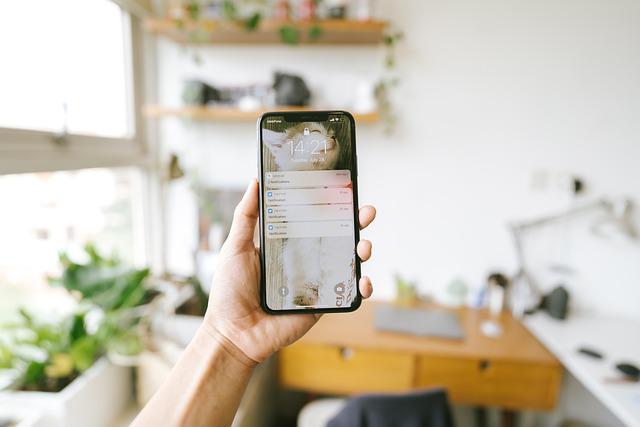Push Notification Authentication – How It Works and What You Need to Know
July 13, 2022 • security

To keep your business and customer data safe, you need a way to authenticate users before granting them access. Push Notification Authentication is an easy, secure way to do just that. This blog post will discuss how it works and what you need to know to start.
You can use Push Notifications to help keep your users safe. If you have access to their email address, you can email them with a link to their Facebook account. Push Notifications will make them more likely to use something more secure than just their password to log in. Users can check their authorization status using a button; notifications can be in-band or out-of-band.
The responsibility of proving that you are who you say you are falls on the applicant. This is done by using push notifications, ensuring that the smartphone-linked authentication system is in your hands. Because push notification authentication is simple and becoming more popular, it is growing in use.
Push Notification Authentication Benefits
User Comfort
You can quickly and easily accept a push notification from the app on your phone to get in immediately. You don’t need to type in a password or remember anything. This is ideal for people who already have cell phones and are familiar with mobile systems.
Security
There are several drawbacks and advantages to each option. Passwords, while providing security, may be discovered or leaked in various ways. Because most individuals can enrol in a few minutes by texting, SMS, and multi-factor authentication (MFA) has the potential to be SIM swapped. Even authenticator applications like Authy and Google Authenticator that use more robust encryption than SMS can be SIM swapped because most people can register via text message in a matter of minutes.
You can authenticate to OneLogin using text or 2D security codes. You may allow or deny login access and transactions with a particular code. Simply choosing yes or no is sufficient to authenticate securely. It isn’t transmitted over the internet, so it’s not susceptible to man-in-the-middle attacks.
Frictionless Multi-Factor Authentication
Google has been working to make it easier for people to use their phones with the release of Android 9 Pie. This new version of Android includes enhanced security features that make it simpler and more convenient to use your phone. These features include enhanced push authentication and phone locking capabilities.
Your registered phone is the first factor of authentication. The second factor can be Touch ID, FaceID, or PIN. MFA is still popular, mainly because it is linked to smartphone unlocking, but this type of MFA is more secure because it requires the user to combine push authentication with their phone’s locking function.
Offering an MFA alternative that is easy to use will help your customers trust you more. The term security hatred factor refers to people’s negative feelings when new security measures make their lives more difficult without offering clear benefits.
Low-Cost Security
2-Factor authentication is more than just a way to stop hackers and other people from getting into your network. This program is flexible and doesn’t require any hardware. That means it’s a more cost-effective option than high-end security solutions. It’s also easier to set up and use, especially if you run your business from home.
Another advantage is that management is simple. Users can install the software on their phones without help from IT, and new versions are automatically downloaded and installed. Can link many devices to the same account address.
Push Notification Authentication Disadvantages
Needs Internet Connection
You need to have an internet connection to use this type of authentication. So, if you’re in an area with weak or no signal, you may need help logging in.
Relies on Third-Party Service
This type of authentication also relies on a third-party service, which means another company has access to your data. If that company has a security breach, your data could be compromised.
Requires a Mobile Device
Businesspeople who use their phones for business are more at ease. On the other hand, some people may be unable to or unwilling to do so because they need access to a smartphone. Furthermore, your phone’s battery depletes over time; thus, you will only be able to verify your identity with this approach if your phone runs out of juice.
Security Breaches
Authentication systems are only as secure as the technology they use. For example, push authentication is more secure than other types of identification. A fraudulent request, for example, may be acknowledged by a user by accident. It’s too easy to fall into the trap of clicking “approve” after getting an email from a device.
However, push notifications may help to reduce this disadvantage. When a user receives a push notification, it will prompt them to accept the app’s terms and conditions. “Please approve request ECG2 on the local system,” says the phone, and the user must link the number with permission. Furthermore, independent elements have no impact on an app’s security. Smartphones are just like any other technological device with an operating system regarding vulnerability to attack and infection. Android phones are particularly vulnerable to attacks and malware.
In conclusion
While push notification authentication has some disadvantages, the advantages outweigh the disadvantages. The fact that it’s a low-cost security measure that is easy to set up and use makes it an attractive option for businesses.
security
admin is a senior staff writer for Government Technology. She previously wrote for PYMNTS and The Bay State Banner, and holds a B.A. in creative writing from Carnegie Mellon. She’s based outside Boston.